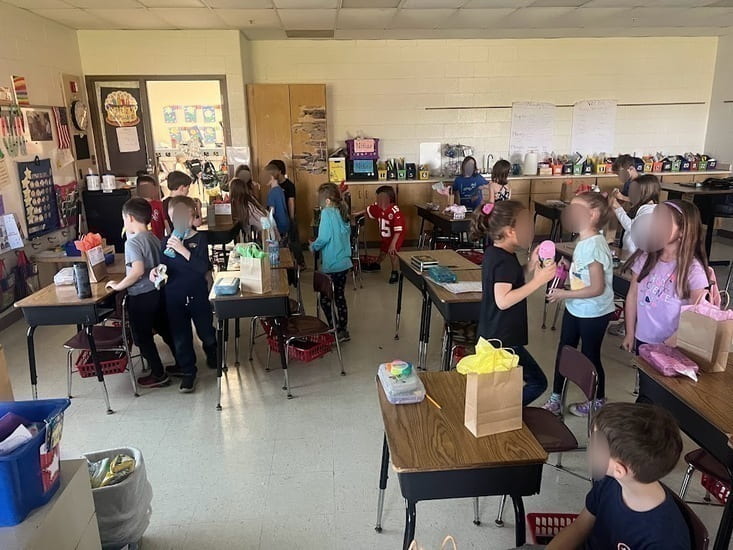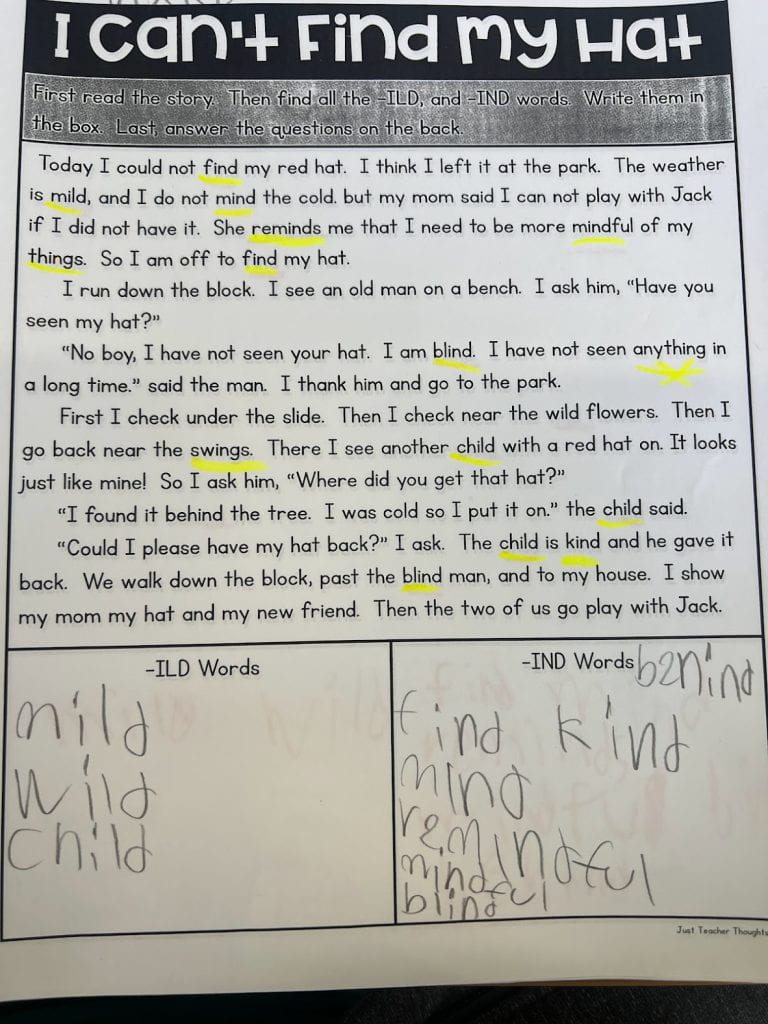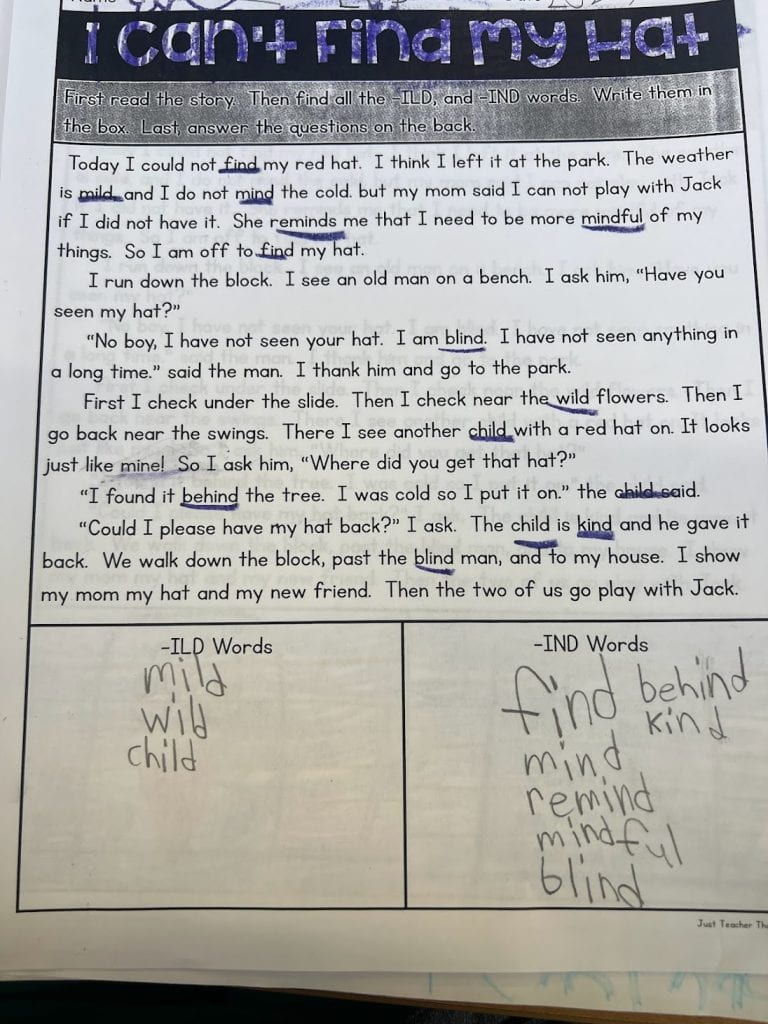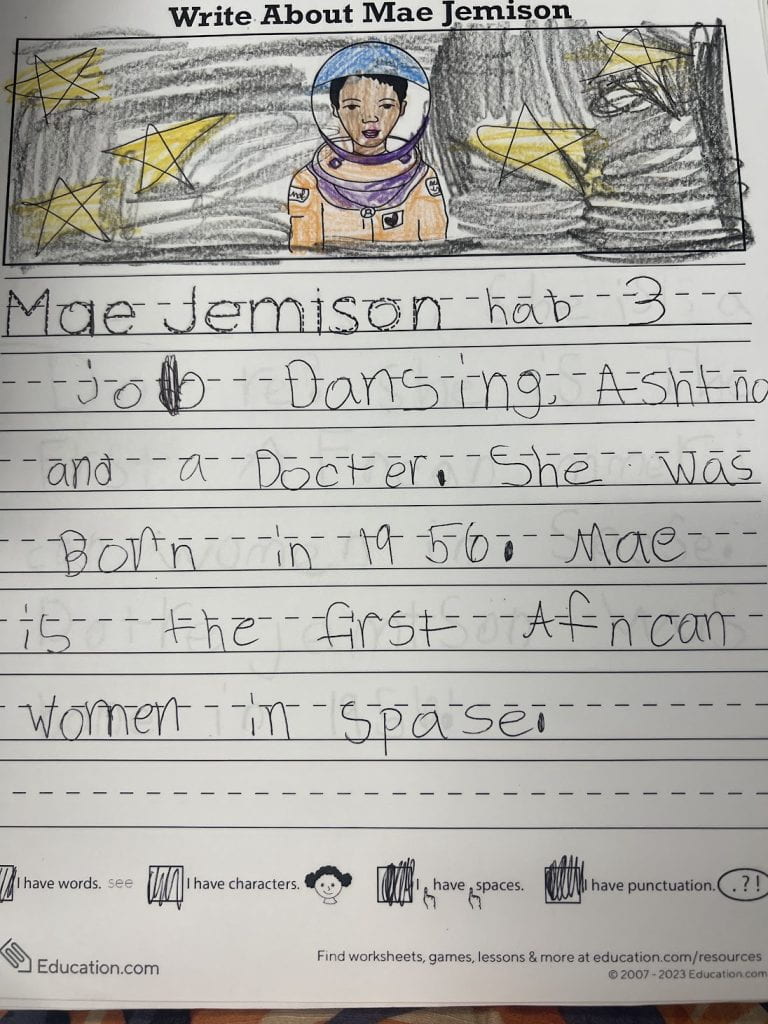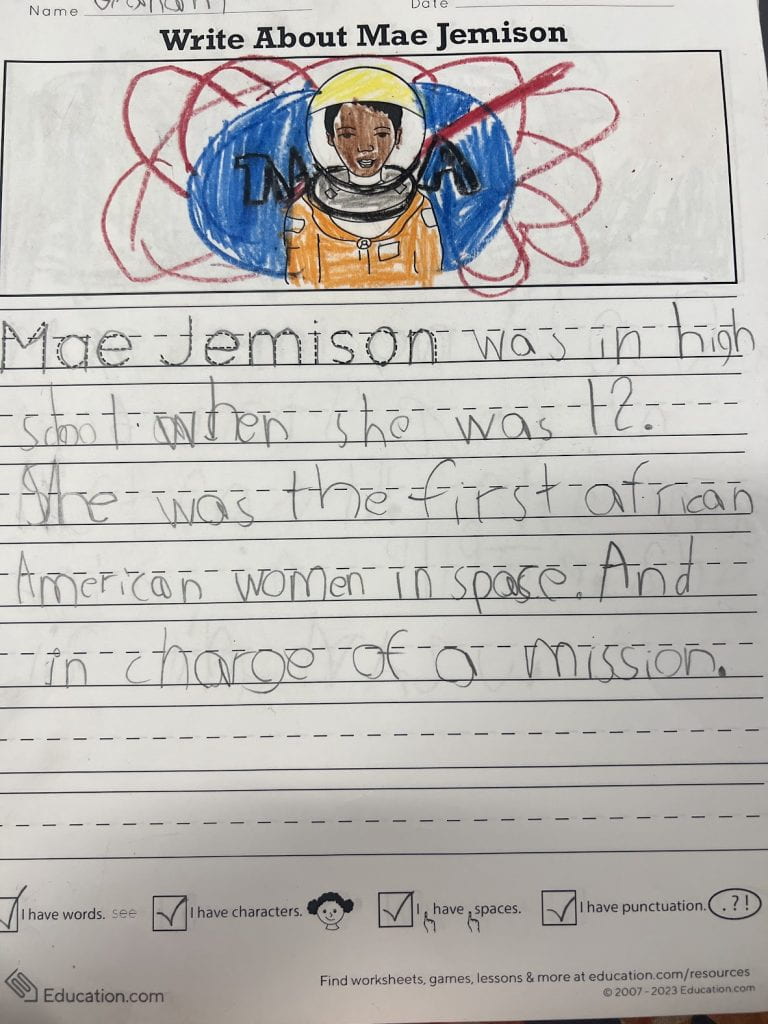Date: May 4, 2023
By: Shaylee Marr
As my field experience comes to an end, I have learned many new and interesting things that I can take with me within my teaching career from the students, my MT, and my professors. When coming into the classroom, I entered with two strengths. These strengths included the ability to connect with students instantly and the ability to make precise observations about a student’s behavior and learning ability based on their classroom demeanor. These skills are essential because making a connection with students allows me to have better classroom management for future teaching. Identifying or observing critical details about a student is also essential to my teaching career because being able to identify what students need to be successful in and out of the classroom.
When thinking about how I improved throughout the semester, I think about each time I stood in front of the classroom. Thinking of improvement, one can only improve with When thinking about how I improved throughout the semester, I think about each time I stood in front of the classroom. Thinking of improvement, one can only improve with practice and by accepting feedback and building off of it for the next experience to get better. One area I have improved in is getting students’ attention and assessing students using questioning. The reason I place both of these together as one improvement is that if I am unable to gather and keep the student focused and attention throughout a lesson, then they will not be able to answer any questions throughout the lesson that I ask that will allow me to assess their understanding of the content along the way. With the questioning, I also feel that I have improved with asking specific and content-related questions to students who are relatively quiet and withdrawn from classroom discussion in order first to assess what they have learned so far and, second, gather their input on the topic at hand so they are engaged within the lesson and not just sitting back and waiting for the same 3 to 4 students to answer and move the lesson along. The second area of improvement would be my ability to provide students with a sense of ownership. When beginning my journey as an educator, one of my main major mistakes would be to allow students to give up too easily and allowing them to half do work and say it is okay. As I continued as an educator, I started to provide students with a sense of ownership and letting them know that they are in charge of their own learning experience and that they are the only ones who can truly help themselves learn and become better. By giving students this sense of ownership and making it clear that they are also responsible for their learning, I find that many more students are participating, learning, showing improvement within academics and behavior and much more. While I am still guidign them, giving them this ownership allows me to focus less on the little things and more on getting the content across to each students in the best way possible.
There are 2 areas in which I believe that I still need work on: Verbal explanations and transitions. When teaching, I tend to continue without explaining why we are completing the lesson, how it is developmentally appropriate, why the students should know it, etc. By providing verbal explanations for learning, students, and other teachers, I will be able to clearly understand why the content I provide is essential to student development overall. When it comes to transitions, I still find myself struggling a bit to find developmentally appropriate transitions for students when activities and task are complete so they are not just sitting them doing nothing as time passes. By working on my transitions and focusing on what the students will be doing next and the smoothest way to get to that point, I am able to complete a task and successful move students from one area to another with minimal issues. As I begin to focus on my field experience and student teaching, I will begin to include these concepts more often in my teaching so I can become more familiar with them for future use.
My most fun experience can not simply be described as one specific event. Overall, my entire encounter at my field experience was enjoyable and rememberable. I would say one of the most fun experience I had would have to be the consecutive lessons I did a the beginning of the semester. When beginning my field experience, the second week, in order to prepare for my grade lesson plan that was upcoming, I prepared a mini science lesson about the sun, moon, and stars in which the students made constellations, followed by the science lesson plan about the moon phases, then followed by the Dr. Mae C. Jemison social studies lesson plan. This was loads of fun because it was interesting to see how the student recalled information about space and the general topic week after week; this let me know that the students did indeed learn something from me within this timeframe about space and the people who go to space.
My most challenging experience I would have to say is controlling how to respond to certian situations. As I continued to complete my field experience hours, some situations that occured seemed to be well outside of my scope of knowledge and overall ability. This was challenging because many times when coming into the classroom, the students would ask me things or make statements to which I am unsure of how to respond due to my nature as a simple student observer/teacher.
The best lesson I believe that I taught was my first literacy lesson plan. While this was not my favorite lesson, it was however, the best lesson I taught based off the assessment from the students and the students focus and attention to the lesson. The reason I believe this was my best lesson was also becuase with the lesson plan, the field experience location provided a curriculum in which I was able to identify what kind of literacy lesson was already in place and I was able to adjust accordingly off of this.
There are three things that I learned from my mentor teacher/cooperating teacher that helped me along the way. The first thing I learned is that patience goes a long way. When observing my MT/CT she never seemed to get upset or frustrated with the students, she always kept a level head and addressed whatever issues she had head on. By doing this, students were able to see that she was fun and caring yet she set boundaries and expectations in which the students tried to subconsciously stay within through out the day. The second thing would be to always have a possible attitude. While having a positice attitude can sometimes be a lot of work, by showing the students that there is always something positive that comes form certain situations in which the students can acknowledge and address rather than a negative mindset or outlook on certain things which could ruin a lot. The last thing that I learned from my MT/CT would be to folloe my teacher gut. By this I mean that there were many times that I found myself second guessing and stressing about how something might go wrong or get messed up or wont be helpful and my MT/CT told me to do it and it worked perfectly. By following my first mind and not second gussing myself, there could be great accomplishments that happen.
Throughout this overall experience, there are three things that I learned about myself as a teacher. The first thing I learned was that if I stop worrying about every last detial of everything, I could be phenomenal within the classroom. When teahcing and getting in front of the students, everything felt completley natural to a point that somehow I felt as if I had been doing it for a very long time. Another thing that I learned about myself is that I get excited when the students are having fun learning. My overall personality can be explained as goofy and funny and I find that I can simply be myself within the classroom and students will still be happy to learn from me because I like to make learning fun. The last thing I learned about myslef would be that I have a love and hate relationship with set cirruculums. I personally feel that during my field experience there were times when the lessons that were precreated through the cirriculum did not grasp the students attention as much as the lessons that I created did.
While being at my field experience location, there are several things that I learned about the students within my classroom placement. One very major thing that I learned is that every student is simply and completely, unique. Even without a physical description, I feel that I could identify students from my field class just by their personalities and what they say within the classroom. The students personalities and the layout of the classroom seemed to work perfectly together as it built on a safe learning environment for the studnets. As an educator, the teaching field is constantly innovating and changing right before our very eyes. There are three things that I would say that I noticed about the educational field based off of my experiences. The first thing would be the environment in which the schools present. When walking through the school at my field experience location, it seems that all the classroom were arranged for students of almost all grade levels, the colors and the shapes used to decorated the halls and main areas were vibrant and welcoming, and in ever classroom, the class is set up in a way that allows students to support on another while also being assessed by the teacher from anywhere in the classroom. Another thing that I learned about the educational field would be that everything is fast paced. This means that when it comes to teaching lessons and making sure that students are on task, an educator can not afford to spend three to four days on one thing, this is a waste of time and resources. The last thing I learned about the educational field is that resources are everywhere. While there might be something that I don’t understand there are other teachers, staff, textbooks, etc. that are available for the benefit of the teachers.
While teaching, observing, and participating within my field experience location, there are many things I did that I enjoyed, many things I did yet I wish I had not, many things I had not done in which I hoped I did, and more. When I think deeply, there are a few things that I would have done differently if I were given the chance to do so. One thing I would have done would be to be more confident in teaching and addressing students. When I began my field experience, I happened to have a class in which the MT/CT had already set clear boundaries and expectations within the classroom so students could understand what is expected of them throughout there time in the class.
Overall, now that I look back at my experience within this semester and what I accomplished within the field experience location I was placed in, I would say that there are a few things that I do look forward to as a new semester we’re to begin. The first thing would be the new students and staff I would encounter during student teaching. As I said before, each student is completely unique, this means that they each have their own personality and way of learning and developing which allows me to find out exactly how the group of students work together and how they work as individuals. Another thing would be overall experience I gain from being in the classroom everyday; this alone is a different encounter than I have experience with only being in the classroom for a few hours or one day at the most. While I do look forward to my student teaching experience, I am also anxious about a few things. One thing I am anxious about is the fact that I may make mistakes. While we are all human, my goal is to provide a quality education to the students within the classroom. In conclusion, my field experience and methods have helped me learn a lot about myself and my goals as an individual and an educator. I simply can not wait until student teaching! This isn’t a simple goodbye so, until next time friends
